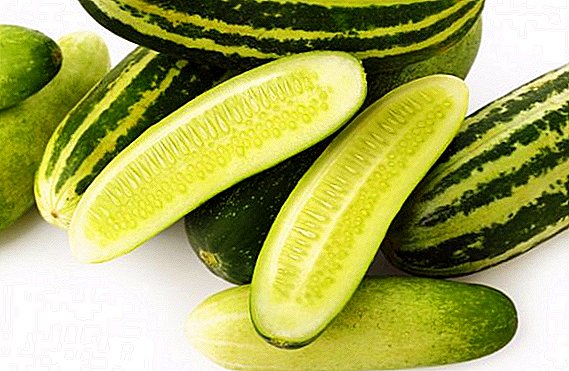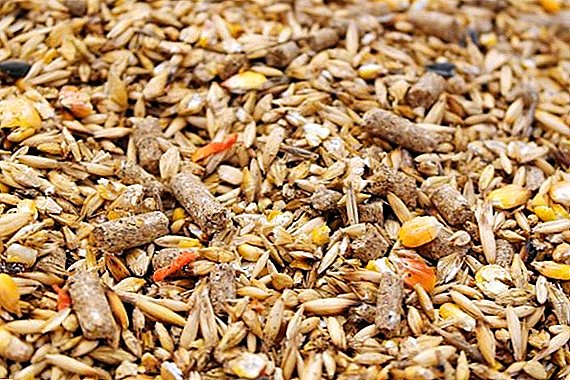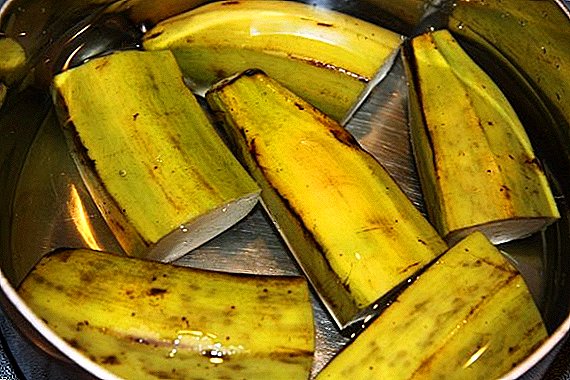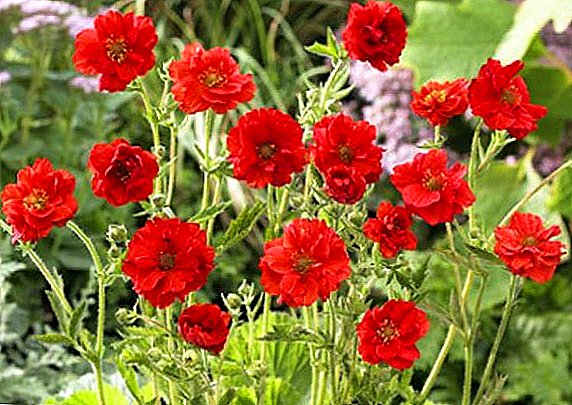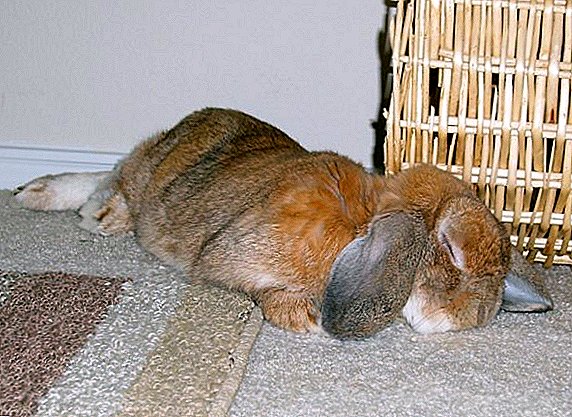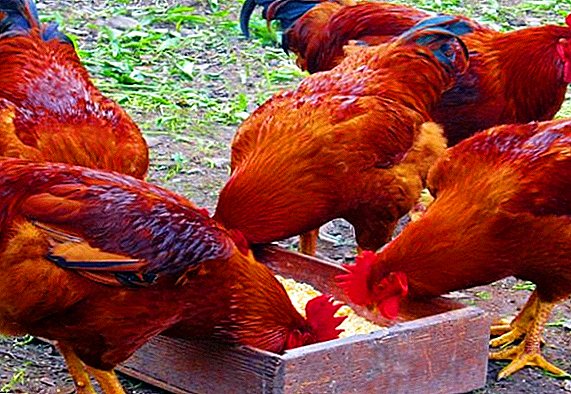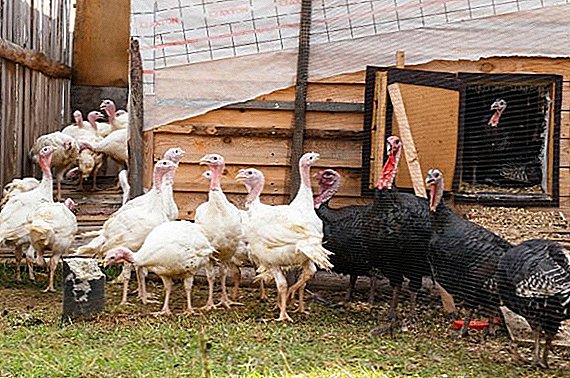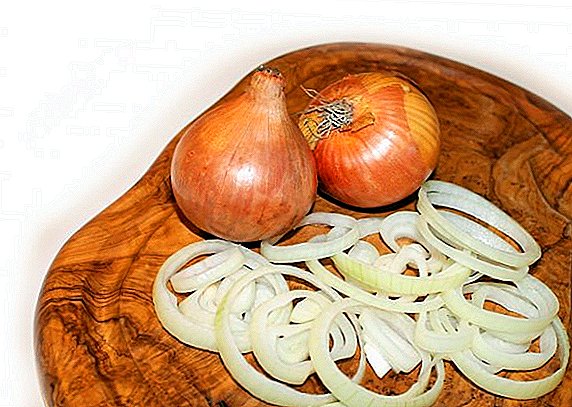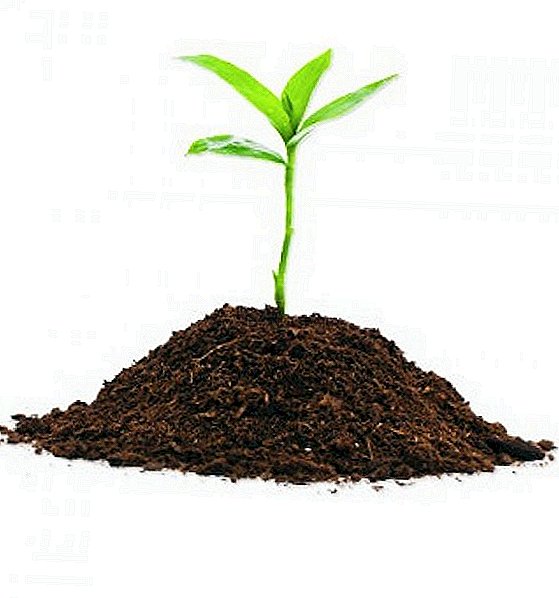 The quality and composition of the soil on the site are of great importance, because it is from this depends on the yield of planted crops. Today we will look at the main types and types of fertility, and also look at how to determine the quality of the land in the garden plot and what are the ways to improve its quality.
The quality and composition of the soil on the site are of great importance, because it is from this depends on the yield of planted crops. Today we will look at the main types and types of fertility, and also look at how to determine the quality of the land in the garden plot and what are the ways to improve its quality.
Soil fertility
The soil, which can partially or completely satisfy the need of plants for useful substances, is considered fertile. This means that all the necessary components are balanced in it, which allows the planted crops to grow and develop. Not fertile or less fertile is considered the soil, which lacks any substances.  By soil type are divided into:
By soil type are divided into:
- clayey;
- sandy;
- sandy;
- loamy;
- lime;
- swampy;
- black earth
Important! Soil fertility is predetermined by the degree of interaction of all its components with each other.
Types of fertility
The earth can be saturated with nutrients due to natural processes and by improving its quality with the help of agrotechnical methods. Fertility can also be viewed from the point of view of yield or profit obtained from the harvested crop. Based on these criteria, fertility is divided into the following types.
Potential
This definition is typical for soil with periodically high yields. In this case, it all depends on a combination of factors such as weather conditions and agricultural equipment used on a particular plot of land.  For example, in arid summer the most fertile soil - black soil - will produce less crop than podzolic.
For example, in arid summer the most fertile soil - black soil - will produce less crop than podzolic.
We recommend you read about the types of soil and fertilizer system for them.
Natural
This is a type of fertility, which is due to the rich composition of the soil, regardless of the weather and economic activities.
Artificial
The soil is saturated with necessary substances at the expense of human activities, that is, it is enriched not by natural means, but by fertilizers and planting.
Effective (economic)
Such fertility is a combination of the qualitative properties of the landscape and agricultural technology used by man. The unit of measure in this case is the crop or its cost. 
How to determine fertility on the site and on what it depends
The fertility of the land at the site determines the successful cultivation and yield of crops planted on it, so it is very important to determine the level of its fertility before planting.
Did you know? Initially, our planet was a bare rocky terrain, and it took centuries to build the ground. It happened under the influence of climatic conditions - winds, rain, temperature drops and many other factors.
Physical properties
One of the criteria for the assessment of soil is the determination of its physical properties, namely: the structure, composition, texture, as well as the location of groundwater. All this can be determined by eye, after a careful inspection of the land on the site. Fertile soil should be loose, porous and textured.
Such a structure is considered ideal and contributes to good aeration, proper distribution and retention of moisture, as well as constant updating of the soil, provided that it is properly planted and, if necessary, with various fertilizers. 
Chemical properties
Chemical analysis will allow much more to learn about the quality of the soil, among the essential components that should be present in it, we can distinguish the following:
- humus;
- phosphorus;
- potassium.
If during the research it turned out that all these indicators are within the normal range, then such a soil can be considered fertile.
Important! The high content of potassium, salts and readily soluble chemical elements automatically deprives the soil of fertile determination.
Even if studies have shown not the best results, and it turned out that there is a shortage of useful components, but harmful and toxic substances are in excess, you should not be upset, because you can fix it. How to do this - we will look at later.
Biological properties
The presence of microorganisms and bacteria in the soil is not at all a negative characteristic, but, on the contrary, is necessary for its fertility. Microorganisms are able to significantly improve the quality of the soil through loosening, retaining moisture, increasing heat, oxygenation and ventilation.  A soil in which microorganisms and bacteria are scarce or completely absent is considered poor.
A soil in which microorganisms and bacteria are scarce or completely absent is considered poor.
Did you know? Soil is the most powerful and effective water filter on Earth. This cleaning is a three-step process and consists of biological, physical and chemical filtration.
How to improve soil fertility
Despite the fact that the formation and composition of the soil is an incredibly complex natural process, we still have the opportunity to influence fertility and adjust its level. To do this, it is necessary to take into account a lot of nuances, and the introduction of fertilizers, compliance with the rules of crop rotation and agricultural technology are fundamental.  Regardless of how fertile the soil you have on the plot, there are general rules for its saturation or maintenance:
Regardless of how fertile the soil you have on the plot, there are general rules for its saturation or maintenance:
- planting annual green mans plants;
The best siderats for the soil are lupine, oilseed radish, oats, rye and phacelia.
- rest of the soil every 4-5 years, that is, no crops are planted, the land "walks", but at the same time it is plowed and fertilized with organic matter in spring and autumn;
- planting medicinal plants: it can be garlic, marigold, wormwood or other plants that can disinfect the soil.
Clayey
Clay substrate is classified as infertile due to:
- dense structure;
- bad warming up;
- insufficient air circulation;
- improper distribution of moisture (it is retained on the surface and does not enter the lower layers).
But, with all this, clay soil is considered to be quite rich, and if it is properly treated, you can successfully grow many plants on it.  Actions to improve the quality of the soil should be as follows:
Actions to improve the quality of the soil should be as follows:
- It is necessary to loosen the earth to a depth of more than 25 cm and thereby provide aeration, this can be done by applying sand or peat, at the rate of 30 kg per 1 square meter. m
- In order to increase the number of microorganisms and bacteria, manure or compost is applied.
- To reduce the acidity of using liming.
Important! Plants should be planted shallowly in clay soil, this will help the root system to develop well, to obtain the necessary moisture and nutrients.
Sandy
This soil is considered to be poor, since it contains practically no nutrients. But its structure can not but rejoice, because the sand quickly warms up and air circulates well in it.
It perfectly passes water, preventing it from stagnating, but in the hot summer it is rather related to the minuses of this soil, since the moisture in it instantly evaporates, so you should put peat, manure and compost into it in order to ensure moisture retention.
This is best done in the autumn period.  Regular fertilizing with complex mineral fertilizers is very important.
Regular fertilizing with complex mineral fertilizers is very important.
It is recommended to bring them as often as possible and in small portions, so that nutrients are not washed away by rains, but delivered to plants.
To enrich the soil using siderats. They need to sow to a depth of 13-15 cm, so that they get enough moisture.
Did you know? 95% of what humanity eats grows on earth.
Sandy loaf
Such a soil is an excellent option, as it harmoniously combines a good structure and a large number of nutrients. To feed up sandy ground is necessary only when it is heavily depleted. For this purpose, complex mineral fertilizers and organic matter are introduced. 
Loamy
This soil has good characteristics and is suitable for growing most crops. There is no need to improve its quality, it is only necessary to ensure that it is not depleted, and for this you need to mulch regularly and make complex mineral fertilizers in a timely manner. 
Limescale
Very poor soil, in which a lot of stony inclusions, but it can easily be improved if you apply a few tricks, namely:
- regularly loosen the soil;
- feed mineral complexes;
- mulch the soil;
- plant green manure;
- regularly make urea and ammonium sulfate for acidification.
Find out what is important soil acidity for plants, how to determine the acidity of the soil on the site, as well as how to deoxidize the soil.
With the observance of these simple rules of agrotechnology, it is possible to grow any crops on limestone. 
Marshland
Such soils are classified as infertile, but at the same time it is easy enough to cultivate and enrich them, for this you need to perform the following actions:
- to dig deep in order to raise the sandy layers;
- make manure, compost, slush or bio-additives to normalize the number of microorganisms;
- feed the land by fertilizing with a high content of phosphorus and potassium.
Important! Cultivated marsh soil is great for planting currants, gooseberries, strawberries and chokeberry, it has enough nutrients for their normal life, and they do not need additional dressing.
To normalize the acidity make lime. 
Chernozem
True luxury - black soil - is an ideal soil, which does not require quality improvement, and its disadvantages can only be attributed to the fact that it is a deficit. If there is such land on your plot, then it should be appreciated, namely: to prevent its depletion, to make organic and mineral supplements in a timely manner, plant green manure and let it rest when necessary. 
Video: 8 ways to improve soil fertility
Feedback from network users
A neighbor 10 years old mustard sows twice a year without tilling. There is a lot of grass and the land is not fluff. You walk on it like on a rolled road. In the beds, after harvesting, I sow mustard, and in the fall under the forks I plug it into the beds. According to my observations, compost pits give a good effect, I put all the waste there (grass, food residue, etc.) mixed with manure (live) and for 2-3 years I don’t touch this pile, in terms of fertilizer. After its addition to the beds plus sand (I have black earth with a small admixture of clay), the effect of yield is noticeable and significant.
Siderata in my opinion is not a cheap pleasure. Phacelia up to 300 rubles per kilogram comes. And she is in my case more efficient than mustard. Siderates, when sowing, it is desirable to thicken to the maximum (brush when sprouting) then there may be a small effect. This year I want to try perennial - sow white clover. As for straw, the introduction of straw into the soil leads to the biological binding of nitrogen and phosphorus for the mineralization of straw, which is required in a large amount of nitrogen, thereby destroying feed from plants. (Andrei Mikhailovich Gradzinsky "Plant Physiology and Biochemistry"). As he says, straw can be applied to the soil, but only limitedly and only for sowing rye or oats. Dear forum users, I described to you my own experience.


Now you know that a lot depends on the quality, namely soil fertility, but there is always an opportunity to correct it. The main thing: to carry out a detailed analysis of the soil in your area, and then, building on its results, to improve or properly maintain the soil.


